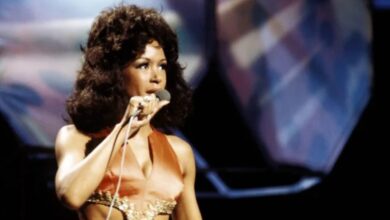“Mary, Mary” by The Monkees is a track that exemplifies the unique blend of pop sensibility and rock energy that the band mastered during the 1960s. As an emblem of their musical versatility and emotional depth, the song offers a window into the broader landscape of the era’s sound and the band’s contribution to music history.
Originally penned by Michael Nesmith, one of the Monkees’ members, “Mary, Mary” was first released in 1966 on the band’s second album, “More of the Monkees”. Notably, it showcases Nesmith’s skill as a songwriter, who was able to create catchy, energetic tunes that still carried a substantial emotional weight. The song’s infectious rhythm and blues-influenced guitar lines provide a backdrop for the story of a man pleading with a woman named Mary to return to him.
The song’s appeal is rooted in its combination of upbeat musical composition and poignant lyrics. The juxtaposition of lively music with the theme of lost love is indicative of The Monkees’ ability to convey complex emotional states through seemingly simple pop songs. This blend of emotions has made “Mary, Mary” a memorable piece that stands out even within the band’s rich catalog of hits.
Beyond its lyrical and musical composition, “Mary, Mary” also reflects the social and cultural dynamics of the 1960s. The Monkees, often seen as a manufactured band created for television, managed to transcend this initial perception through their genuine musical talents and their engagement with the cultural currents of their time. The song, like many of their tracks, mirrored the youthful optimism and the undercurrents of desire for change that defined the era.
The recording and production of “Mary, Mary” also speak volumes about the evolving music industry during the mid-1960s. The Monkees were part of a new wave of music where television and multimedia exposure played a crucial role in an artist’s success. Their music, including this track, was crafted to appeal both to the ears and the visual sensibilities of their audience, a strategy that proved extraordinarily successful in the burgeoning era of mass media.
“Mary, Mary” has been covered by various artists over the years, which attests to its enduring appeal and the versatility of its composition. Each cover brings a new flavor and interpretation, highlighting different aspects of the song’s emotional and musical layers. This not only underlines the song’s adaptability and broad appeal but also solidifies its place in the canon of classic pop-rock music.
In broader musical discourse, The Monkees’ contribution to rock and pop music through tracks like “Mary, Mary” challenges the traditional notions of musical authorship and creativity. Despite their origins as a fabricated band, they exhibited genuine artistic growth and innovation, influencing the genre in ways that have merited deeper scholarly attention and appreciation from newer generations of listeners.
To conclude, “Mary, Mary” by The Monkees is more than just a song. It is a cultural artifact that encapsulates the vibrancy of the 1960s music scene, reflects the complexities of love and loss, and showcases the innovative spirit of a band that was much more than the sum of its parts. Through this track, The Monkees not only mastered the art of emotional expression but also left a lasting imprint on the world of popular music.
For those interested in learning more about The Monkees, a deeper dive into their biography is enlightening. Formed in 1965 in Los Angeles, California, The Monkees were originally cast in a television show designed to emulate the success and style of The Beatles. The band consisted of Micky Dolenz, Michael Nesmith, Peter Tork, and Davy Jones, who were each selected not just for their musical talents but also for their distinct personalities. Over time, they evolved from a prefabricated television ensemble into a genuine band, exerting more control over their music and achieving critical and commercial success. Their journey from manufactured pop icons to respected musicians in their own right offers a unique case study in the history of popular music.



